9 September 2021
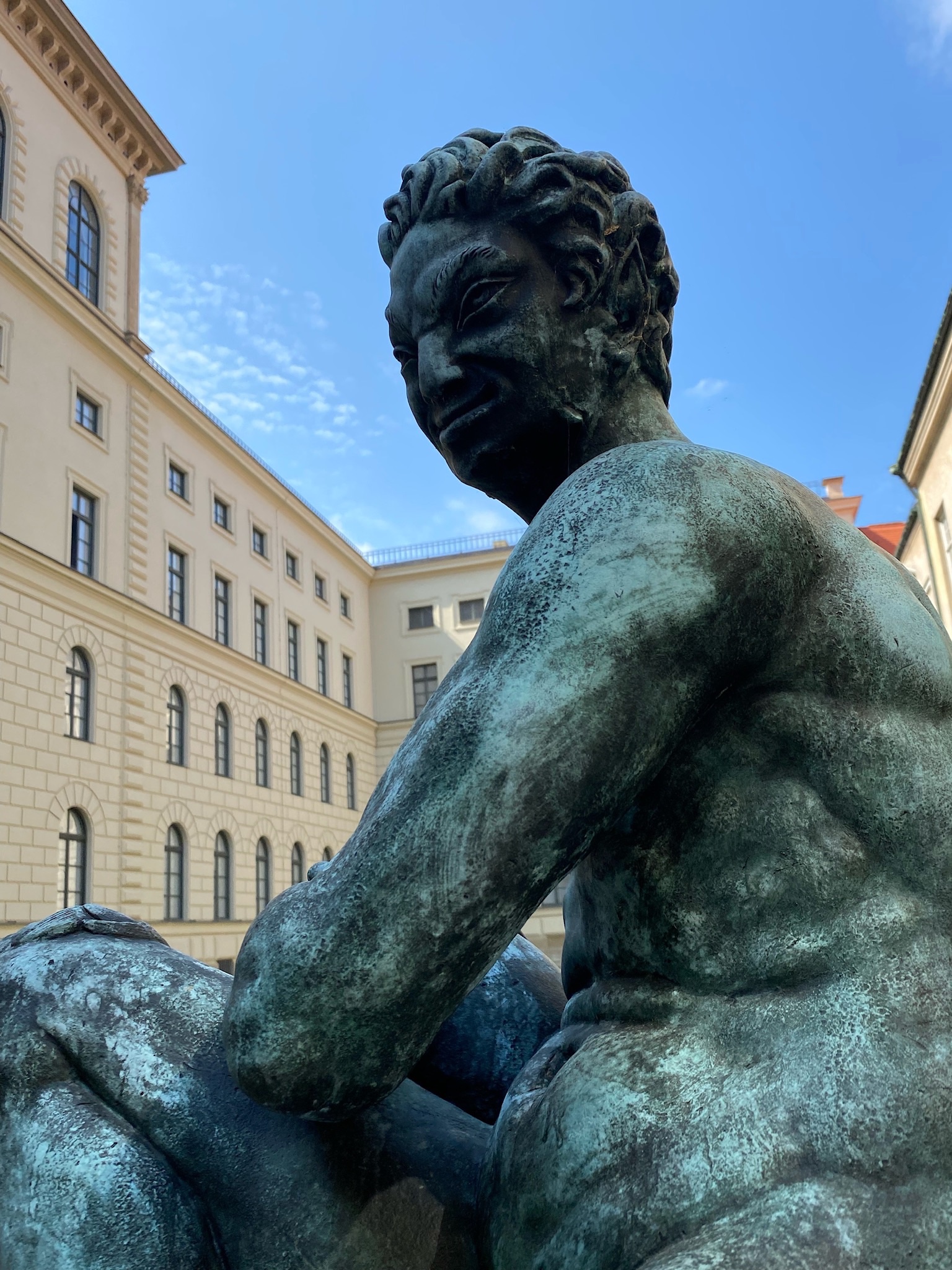
Pan’s grimace is indicative of my aching feet after four hours of touring the sprawling Munich Residenz and Museum. Of its more than 150 rooms, a large part is open to visitors and my feet and back feel it. All the more so after a night of little sleep and everything made all the more in-assessable by the huge “Mobility” exhibition all over town. (International Mobility is simply a car show.)
The first wings of the Residenzmuseum were erected in the year 1385 and building rarely paused over the next 500 years, practically replacing an entire city quarter. As the former palace of the Bavarian Wittelsbach monarchs, its construction and endless expansions reflected its inhabitants. The Wittelsbach princes ruled for centuries and the family contributed, during that time, two Holy Roman Emperors; one King of the Romans; Kings of Hungary, Greece, Sweden, Norway, Denmark; and important marriages to the House of Hannover and House of Windsor. In other words, they got around and represented a powerful family for centuries.
The self-guided tour, with arrows pointing the way, was over four hours of room after room of opulence, or tacky, whichever way you individually responded. The Residenz, like most palaces, would be a place I like to visit but would not choose to live.
Included in entry is a narration explaining the royal inhabitants, history of construction, architecture, decor and royal collections, which are numerous. The Residenz is the largest city palace in Germany and the complex of buildings contains ten courtyards and over 130 rooms. The three main parts are the Königsbau (King’s digs), the Alte Residenz (Old Residenz) and the Festsaalbau (Banquet Hall). Also, because of its long history of construction, it’s architectural styles vary from late Renaissance to Baroque, Rococo, and Neo-Classisal.
The Alte Residenz or Old Residence is the 17th-century west wing. It was easy for a Prince to order new rooms or entire wings to be expanded or rebuilt because he desired new apartments. Some expansions show more artistic taste than others. And because Princes and Kings tended to collect items larger than key chains, there never seemed to be enough space for their extensive collections.
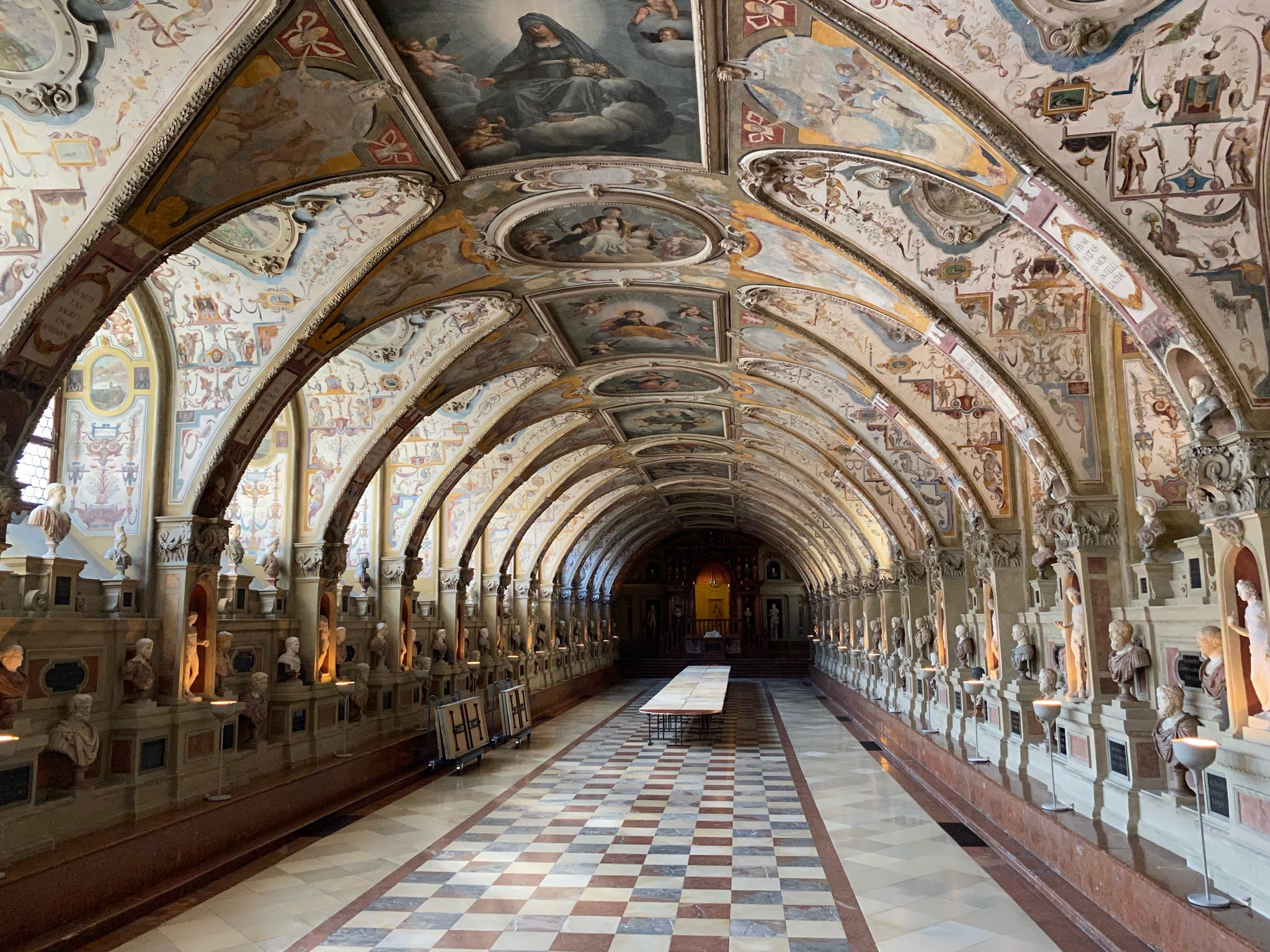
The Antiquarium is such an example. Created in 1568–1571, it was built outside the old castle, as there was no other space for it. The Antiquarium, or Hall of Antiquities, is one of the most ornate rooms of the palace and a superb example of the Renaissance style. The hall was designed to hold the sculpture and antique collection of Duke Albert V and is the largest Renaissance hall north of the Alps. The barrel vault roof adorned with paintings is magnificent.
Additionally, in this wing are the Widow Wing built for the dowager Duchess Anna, Black Hall, Trier Rooms, Court Chapel and the Fountain Courtyard, one of ten that Maximilian I had built. Usually the best and most interesting views are above as most rooms are sparsely furnished. Some courtyards are small and intimate while others large enough to hold tournaments.
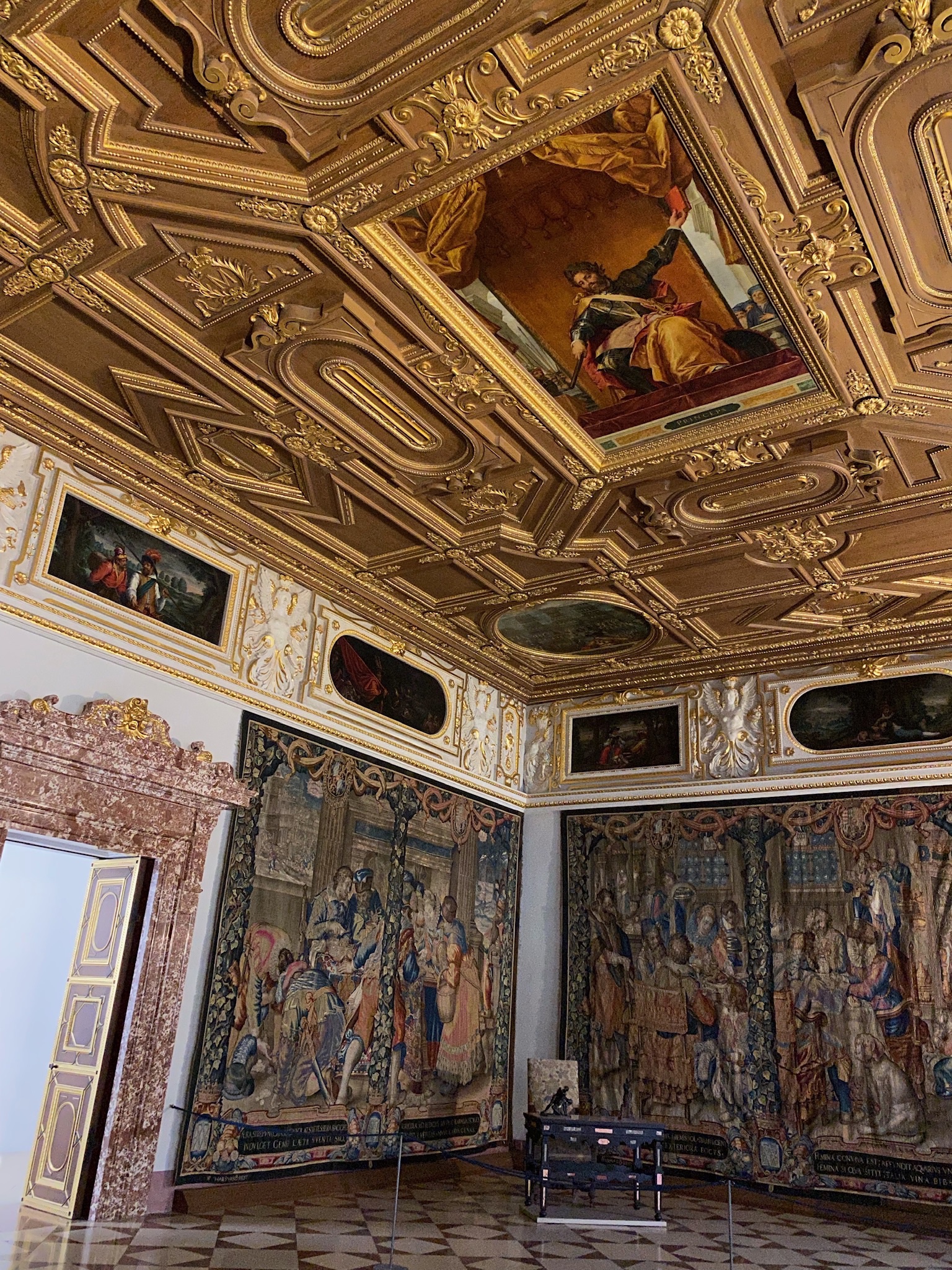
The Stone rooms are also excellent examples of Baroque architecture and art. Built in 1611 under Maximilian I, they were the largest and most important sequence of rooms in the Residenz and got their name from the extensive use of stucco marble and stucco marble inlays called scagliola, a technique reserved exclusively for the royals. It looks like marble but is not. The Stone Rooms served as the most exclusive apartments, reserved for the emperor and his wife when they stopped in Munich. The rooms also contain some of the oldest and finest tapestries, woven in the early 1600s.
The Baroque era is also represented by the rich décor found in the Papal Rooms, so named because Pope Pius VI lived here during his visit to Munich in 1782. For special guests like the Pope, the royals brought out the better furnishings, tapestries and china. The royals were avid collectors of porcelain and there are rooms filled with hundreds of pieces.
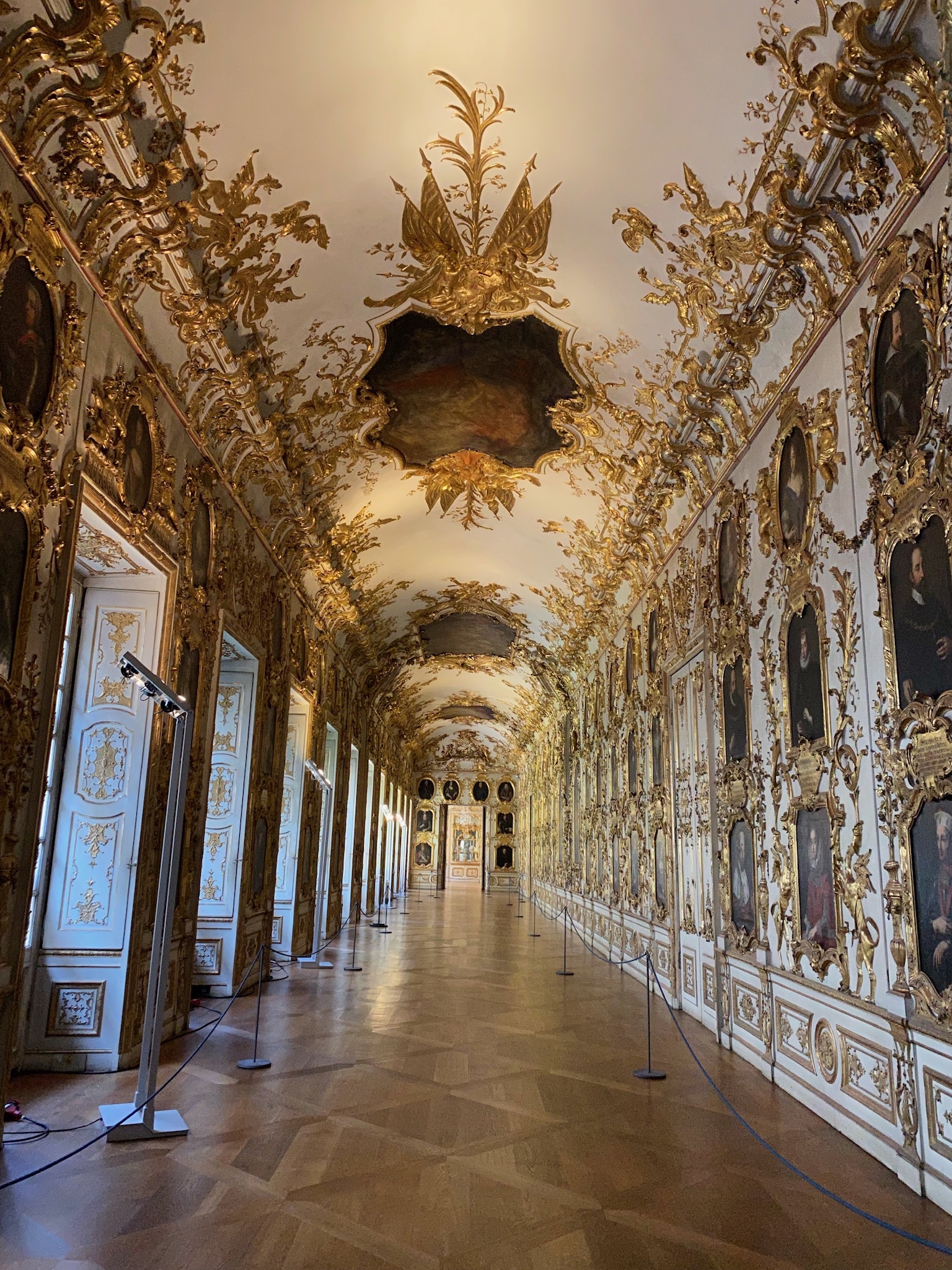
In 1726 Karl Albrecht VII became Duke of Bavaria and Prince-elector of the Holy Roman Empire. He immediately asked for an ancestral gallery meant to honorably display at least 100 portraits of members of the Wittelsbach family. What the Duke received was a magnificent example of the court Rococo style. Think of a wedding cake decorated with tons of gold swirls. The rich, somewhat over-exuberant ornamentation and theatrical style of Rococo architecture combines scrolling gilt carvings on walls and ceilings, rounded corners, white and pastel colors, sculpted molding and more. Some hate it, others can’t get enough. The Wittelsbach ancestors are well displayed.
Eventually, after so many rooms, the names, dates and additions become muddled and the expanse becomes overwhelming. Though rooms and suites are relatively small, the maze of rooms seems endless as royals demolished, rebuilt, expanded, suffered fires, rebuilt and expanded.
If I visited 100 rooms, I heard 100 times that the room, particularly the wonderful ceilings and frescoes, were destroyed during WW2 bombings and reconstruction was limited. I searched the topic to learn Munich was very heavily damaged by Allied bombing—the city was hit by 71 air raids over a period of six years. Allied aircraft targeted aircraft industries and military targets; however, Munich was the heart of Hitler’s movement and probably that also had something to do with it. One of worst bombings came in April 1944 by the RAF when 234 heavy bombers and 16 Mosquito aircraft attacked. It was a devastating and concentrated attack, and around 80% of the buildings in the target area were destroyed. The attack was noted for a new method of carpet bombing at low levels from 700 feet. Around 50% of all of Munich was damaged. Many rooms of the Residenz were destroyed. Much was restored by the 1980s with restoration ongoing. Some of the buildings, however, were rebuilt in a simplified manner and the scarcity of original furniture is noted.
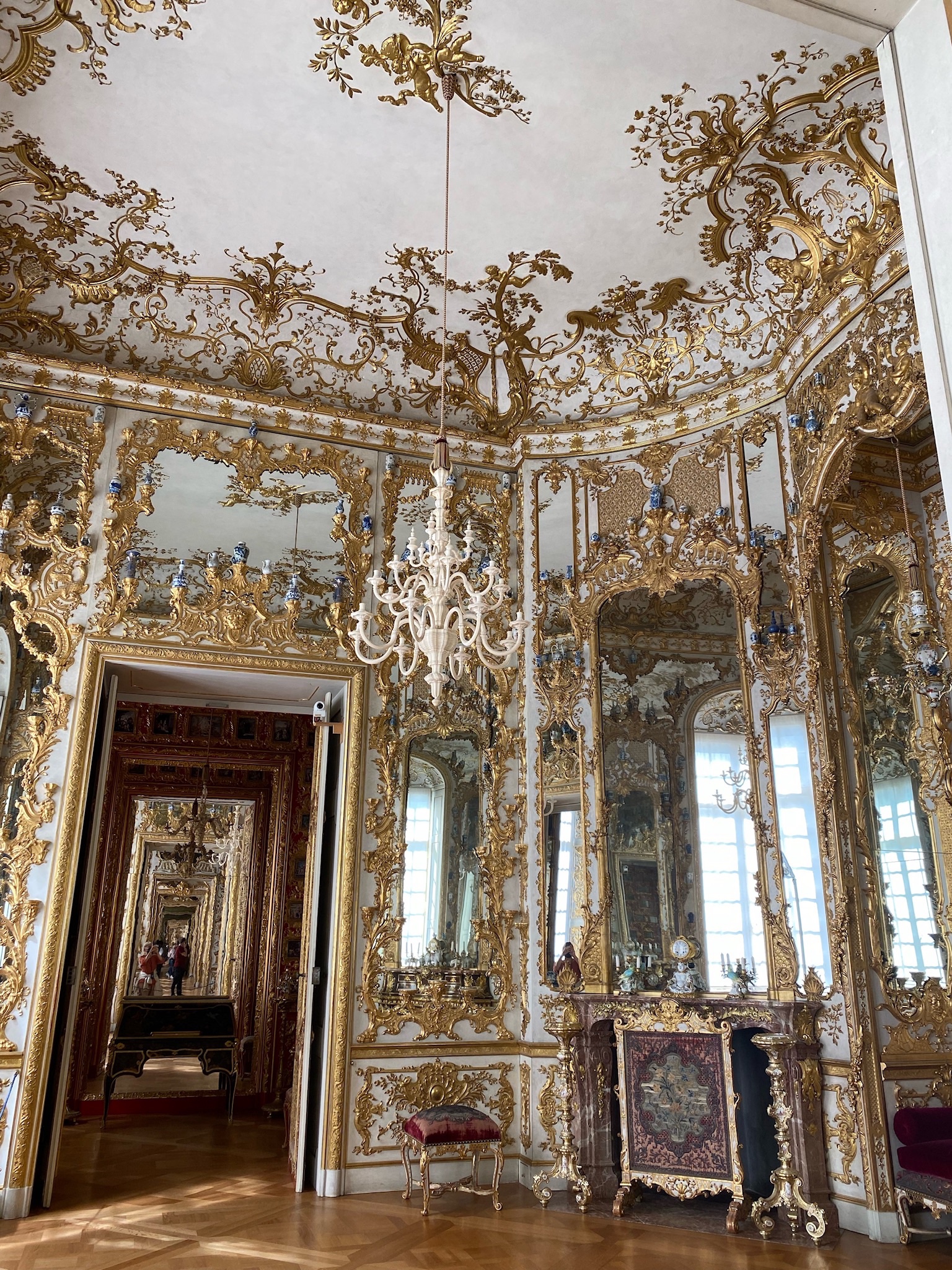
The Residenz’ large dimensions satisfied Maximilian’s successors up to the 18th century. The royals contented themselves with interior upgrading and smaller extensions, at least for a generation or so.
The Königsbau, King’s Building, dates from the reign of King Ludwig I (1825–1848). In the Königsbau are numerous suites of rooms, including the State Apartment of Ludwig I on the first floor and the Nibelungen Halls on the ground floor. The Neo-classical style is represented by the Royal Apartments and the Halls of the Battles. The Treasury is situated in the ground floor of the Königsbau but is closed to visitors at this covid time. The royal living rooms are still preserved; they served primarily for meeting with the royal’s public and could be visited by appointment even at that time. There was even an ‘official’ bedroom that visitors could view, kind of like allowing the other 99.99% to see how their royals lived. The actual private apartments of the royal couple in the Königsbau have not survived due to destruction in World War II. The beautiful Yellow Staircase, once the main entrance to the royal apartments, has been fully restored.
Nearby is a miniature plan of the Residenz. It clearly shows the maze of courtyards, rooms and wings and the expansiveness of the complex. My feet responded with aches and my thirst for a Hefeweizen increased.
The Festsaalbau is the neo-classical 820 foot long Banqueting Hall in the north wing of the Residenz. Added between 1832 and 1842 under instructions from King Ludwig I, it was where mere mortals could observe the royals and their favorites dining. (In fact, the first guide book for the Residenz was published in 1897.) Also, in this wing are located the Large Throne Room, as opposed to the several smaller ones, and the royal reception halls. The Herkulessaal (Hercules Hall) has replaced the destroyed original Large Throne Room and is used as a concert venue.
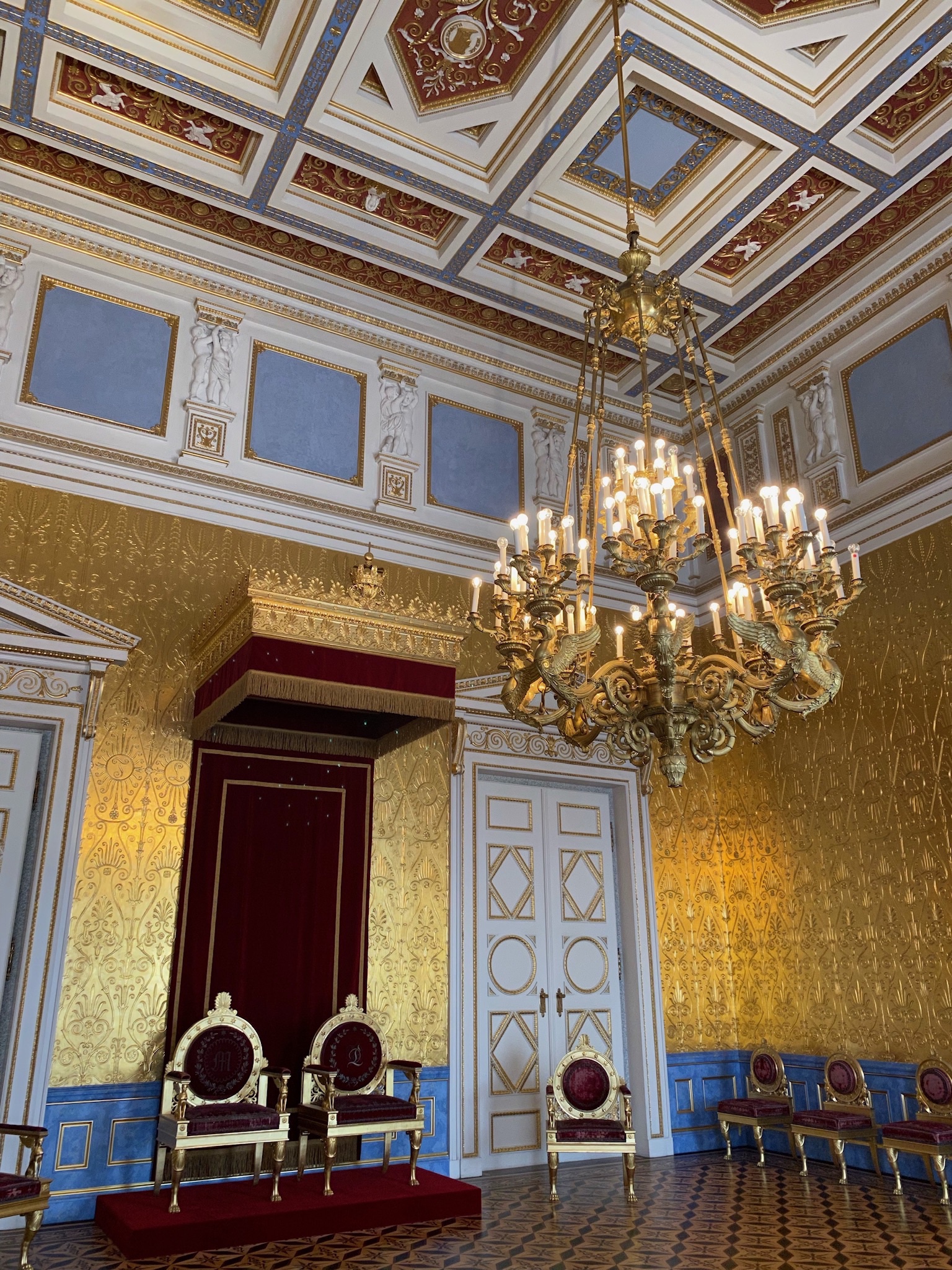
After the revolution of 1918, the Residenz became a public museum. It continues to attract multitudes of visitors. Wear really comfortable shoes and be prepared to spend considerable time among the royals. I’m not certain you will have many of these rooms to yourself as I did, but for the best views you will usually be looking up at the ceilings.
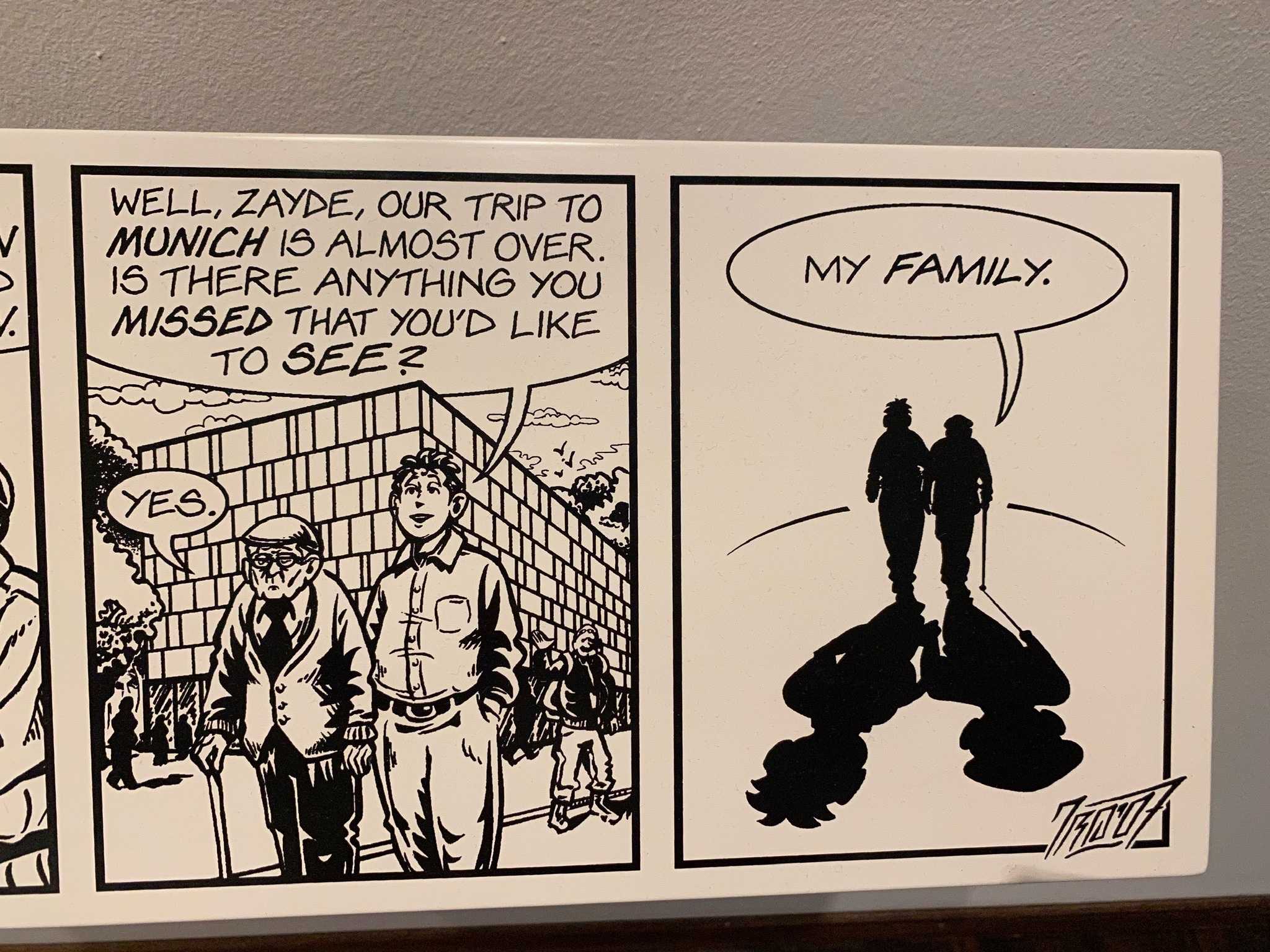
A brief stop, if really interested in Jewish history, would be at the modern Jewish History Museum in Sankt-Jakobs-Platz. Its exhibits are in German. I was a bit disappointed when comparing this to the excellent Dokumentationszentrum. The display of the “Zayde” cartoons was very good. I most enjoyed the outside walls where one could read testimonials about being a German Jew.

So ends another wonderful day in Munich. It is such a disciplined city: Germans absolutely obey crosswalk signals, even adult men, even when the street is empty, thus eliminating the need for a visitor to decide. Now if only they would be that disciplined about smoking and throwing their cig butts on the ground.
I have my evening Hefeweizen and recall joyfully the experience of Duckomenta, if only for an excuse to include another photo.
0 Comments